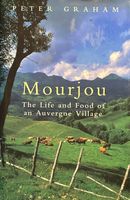Advertisement
Introduction
By Peter Graham
Published 1999
This impression of well-being is broadly correct, though there are one or two pockets of poverty. But what needs to be remembered is that the prosperity of the Auvergne is a fairly recent development. It was ushered in by the so-called ‘trente glorieuses’ (France’s thirty years of swift economic growth from the end of the war until the first oil shock of 1974), the introduction of the welfare state, and the European Union’s generous treatment of hill farmers. Before that, the Auvergnats, like people in many other rural areas of France, were poor; before that again, they just about survived at a subsistence level; and before that, in the eighteenth and early nineteenth centuries, they often starved. Tourists would do well to remember this as they tuck into mountains of cuisine paysanne améliorée at knock-down prices in cosy country inns, browse at the tempting stalls of marchés de pays, or trek up the mountains to ‘eat the ambiance’ of the burons, the austere stone huts where cowherds used to toil away making cheese during the summer.

